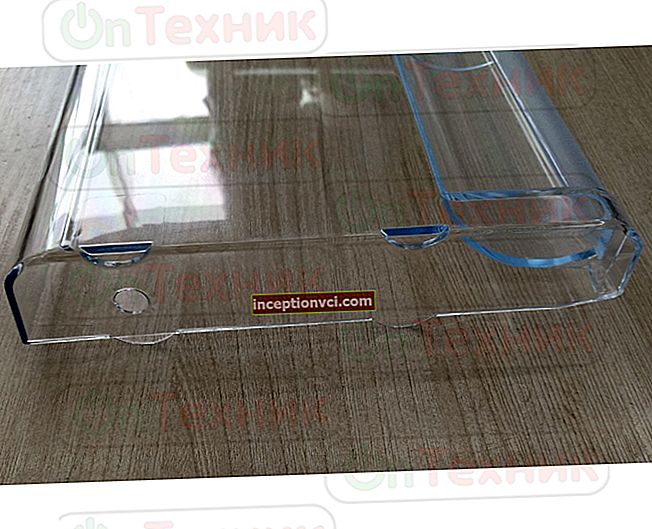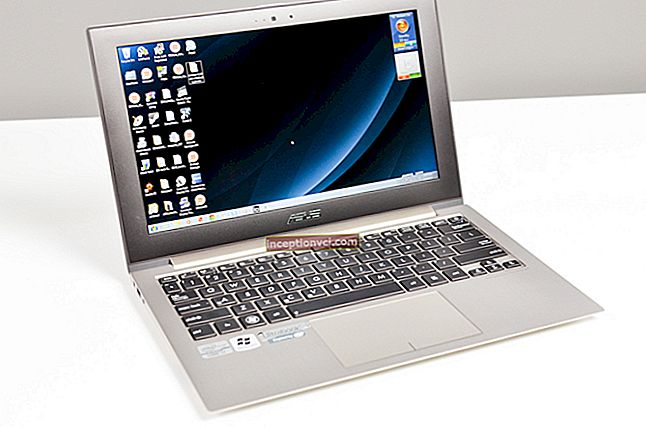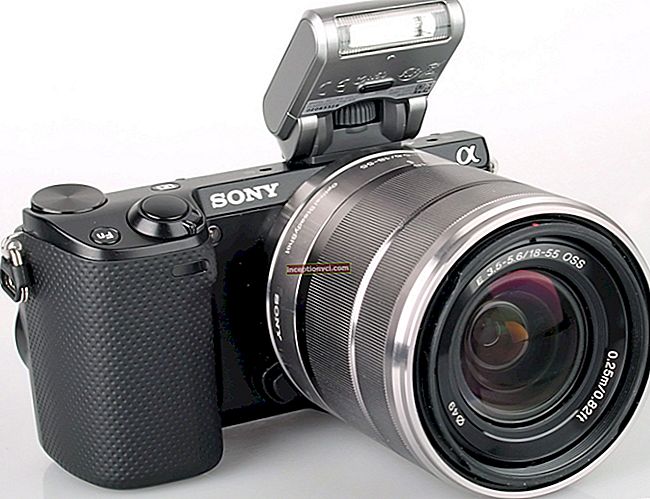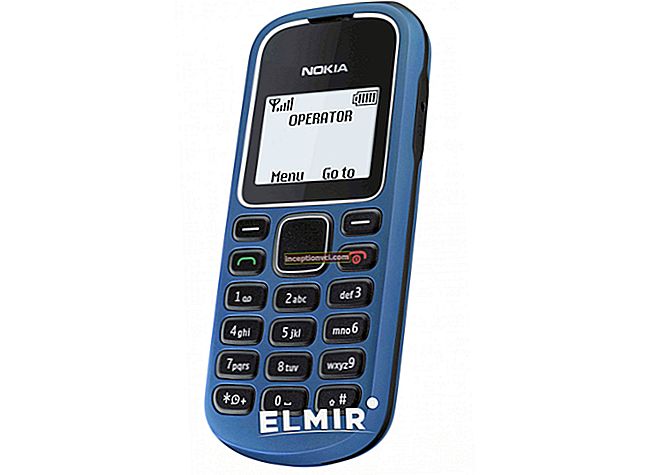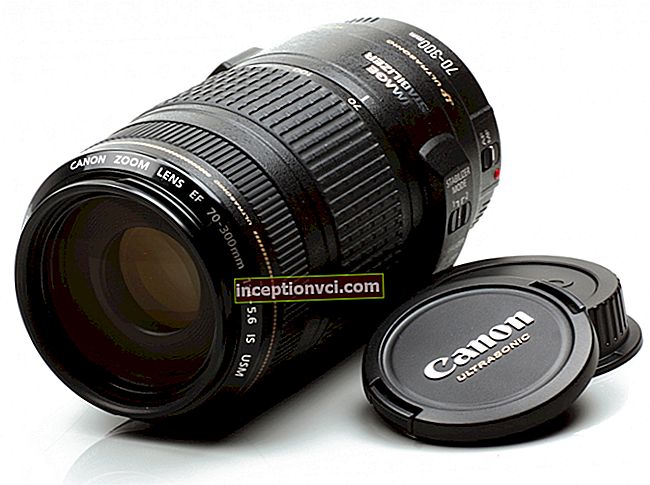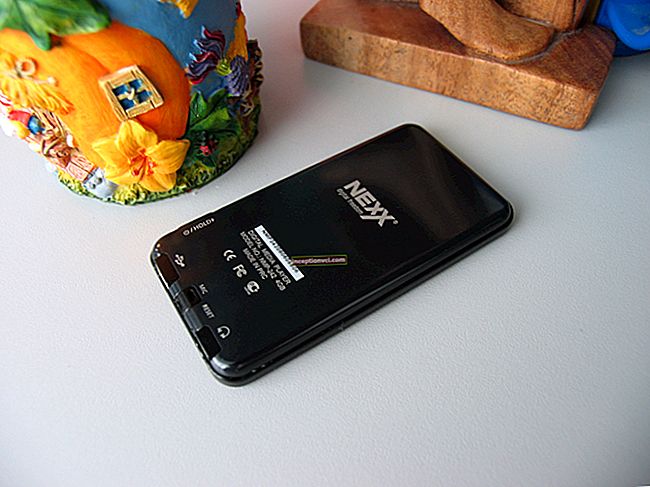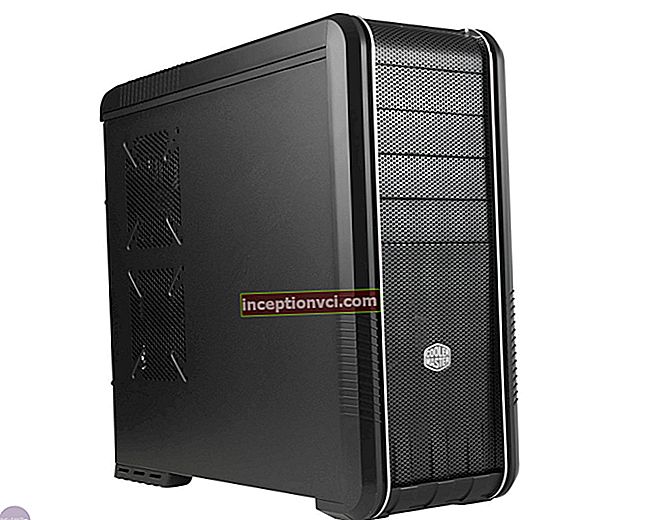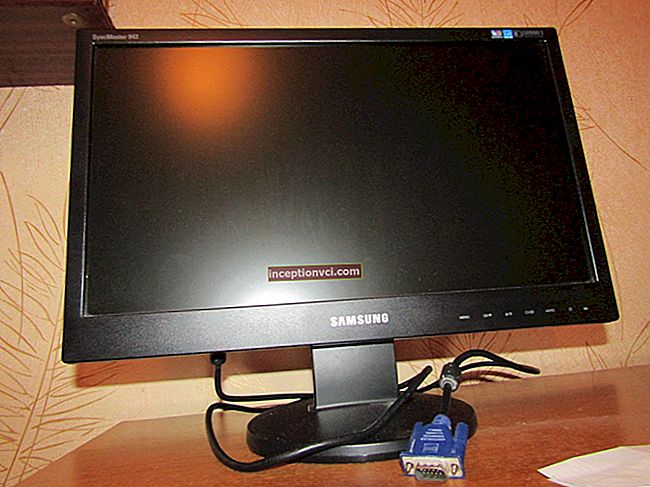Introduction
Ten years ago, only a few individuals used mobile phones, and only wealthy people could buy a computer. Such devices were considered a luxury; not many could afford them. But technical progress made itself felt. Ten years later, we see an amazing picture: almost everyone uses a mobile device, and most families have at least one computer in their home. In addition, many people regularly change these devices to newer models. This is understandable, because every day the market is replenished with the latest devices that are very functional and practical. Thus, you have to "update" the equipment every 4-5 years. But as far as acoustic systems are concerned, the situation is somewhat different. If a stereo system has good technical characteristics, high-quality assembly and reasonable cost, then this model can be popular for a long time. For example, take the Edifier R1900 loudspeaker family, which was launched in 1999. And so, in the era of touch screens and wireless devices, Edifier R1900 does not lose its authority and popularity. We can safely say that the Edifier R1900 series has conquered the market.
Today we will talk about the Edifier R1900TII speaker system. Since its appearance on the market, the stereo system has been modified 5 times by designers and released in an updated form. And although the changes in it were not very significant, Edifier R1900TII enjoyed incredible popularity among buyers. So what is the secret of this stereo system? This is what we will try to find out in the course of our review. Now we have come to the moment when we are ready to consider the successor of the legendary speaker series - Edifier R1900TII.

Specifications
Let's start right away with what buyers are most interested in - the total power of the stereo system. In this case, it is 44 watts. This, of course, is not the ultimate dream, because there are models with twice the capacity. However, if you live in an apartment, then with the Edifier R1900TII you can easily wake up your neighbors. But jokes are jokes, but it is still worth saying that the power of this stereo system is quite enough. Even if you compare Edifier R1900TII with studio monitors, you won't notice much difference in volume. For example, the power of the M-Audio AV30MKII monitors is only 30 watts. The second thing you should pay attention to when choosing a speaker system is the range of reproducible frequencies. This parameter plays a very important role when listening to songs with a varied bass line and "rich" percussion. Edifier R1900TII has a frequency range of 46-20,000 Hz. This is a pretty decent result. When listening, there will be no shortage of bass and treble. However, we will soon be convinced of this. Many users complain that the purchased acoustics reproduce too "muddy" and low-quality sound. At the same time, the speakers are quite powerful, the range of reproducible frequencies is quite acceptable, and the price is high. It's all about the signal-to-noise ratio. When buying a stereo system, be sure to pay attention to this. There are many speaker models on the market. There are speakers with a power of about 70 W, and the signal-to-noise ratio is only 75 dB. An example is the Microlab Solo 3C, whose power is 70W, and the signal-to-noise ratio is only 75dB. Of course, these speakers will also reproduce sound quality pretty well. However, if sound quality is more important to you than power, then you should choose a model with different parameters. The Edifier R1900TII is exactly the option when sound quality comes first. The signal-to-noise ratio of the speakers is greater than 95 dB.This is an excellent indicator that will allow you to achieve the highest sound quality. Studio monitors have approximately the same result. The speaker impedance is 4 ohms.
Subjective listening
To begin with, let's test the level of linearity of the amplitude-frequency response.
Before analyzing the graph, it should be said that the frequency response line should be as close as possible to a value of 0 dB. If there are overestimated or underestimated sections on the graph, then this indicates a low degree of linearity of the frequency response. Very often, manufacturers deliberately increase a certain frequency band in order to add brightness and expression to the sound. This has advantages and disadvantages. If you only use the speakers for listening to music, then this technique will really beautify the sound. But if you are working with sound, you should listen to the "real" sound, not embellished. Therefore, you need equipment with as smooth frequency response as possible.

In the graph, you can see that there is an elevation in the low frequency region. This suggests that the developers decided to give the low frequencies more saturation and density. Moving up the frequency axis of the graph, we see a sharp decline in the upper midrange. The sounds that play in the 1200 Hz region are the harmonics of most instruments. If their volume is too high, then the whole phonogram will lose its natural sounding. But the underestimation of this section almost does not damage the sound. Therefore, this flaw can be treated more or less leniently. As for the high frequencies, it should be noted that they are slightly raised. As in the case of bass, this is done to improve the "readability" of some instruments. In this case, this technique affects the percussion and vocals. With this processing, the sound becomes clear and transparent.
Now let's check how the change in the level of the low-frequency band affects the sound. You can manipulate the bass using the existing bass control.

I think many have already guessed what the three graphs in the picture mean. But, just in case, I will clarify: the red line - the position of the bass control, which corresponds to the maximum bass level, yellow - the bass level is 50%, purple - 0%. Given this data, it is possible to determine how many decibels can be increased and decreased the level of low frequencies. It is worth noting that the bass regulator works more sensitively to increase than to decrease. By increasing the bass level, you can add an extra 5dB of bass. If the task is to reduce the level of the lows, then we have the opportunity to change it by about 1 dB. Using simple arithmetic, we determine that the total bass adjustment range is 6 dB. This is not a very good indicator, especially when compared with the Microlab Solo 2C, in which this parameter is 20 dB. However, do not be disappointed, because in the Edifier R1900TII the level of low frequencies is initially increased, which means that this frequency band needs almost no control.
In general, the sound of Edifier R1900TII can be called excellent. The speaker system reproduces a very bright and clear sound. During testing, no noise or distortion was found in the sound. This stereo system is most suitable for listening to classical music. The raised low end allows you to clearly hear the double bass sound, while the increased high frequency contributes to the clear and transparent sound of vocals and cymbals. If we talk about modern styles of music, then it's worth noting that the Edifier R1900TII is doing well here too. The speakers reproduce high-quality guitar riffs, synthesizer sounds and electronic drum parts. The presented stereo system is suitable for listening to music of various genres.
Connection and management
Generally, unboxing and plugging in a new stereo is a lot of fun. After all, the owner understands that in a matter of minutes he will enjoy high-quality sound.However, some people, having seen a large number of different connectors and cables, begin to realize that connecting speakers is not such an easy thing. But such problems arise only in cases where the acoustics is multichannel and consists of many structural units. The Edifier R1900TII set consists of only two satellites, which greatly simplifies the connection process.

Let's start with the power cable. There is nothing special about it. One has only to say that it is built into the main satellite. The rear panel of the main satellite contains stereo inputs. The presence of 2 pairs of connectors indicates that the speaker system is two-channel. This allows two independent audio sources to be connected. For this, an RCA cable is included in the kit. At the bottom there are terminals for connecting active and passive speakers. There is also a special cable for this, which is included in the kit. When connecting the satellites, one caveat should be noted: the cable for connecting the satellites consists of a pair of wires that have insulation of different colors (gray and orange). As you can see in the picture, the terminals also have different colors. It is important that the specific color of the terminal matches the specific end of the cable. For example, you need to connect orange wires to the red terminals, and gray wires to the black terminals.
Management is also not difficult. The system is switched on and off with the onoff switch located on the rear panel of the main satellite. You can control the overall volume and bass level with the help of the corresponding knobs, which are located on the back of the active speaker. To be honest, this arrangement makes the Edifier R1900TII a little difficult to work with. It is much more convenient to use the controls when they are located on the side wall. For example, like the Microlab SOLO 15. This is all you need to know about connecting speakers and operating the speaker system.
Speakers, amplifier, power supply.
Speaking about the speakers, we can say that the satellite consists of a woofer and a twitter.

The woofer functions as a mid-range and subwoofer speaker. This speaker is 5 inches in diameter. It is made of paper and has a woolen finish on the cone. Also on the diffuser there are 6 notches, which are located at a slope. This gives the speakers an original look and also plays an important role in sound reproduction. Around the speaker is a metal frame with which the speaker is screwed to a wooden wall. There is a rubber pad on the inner surface of the woofer. It serves to prevent vibrations from passing from the speaker to the wooden cabinet. The resistance is 6 ohms. There is magnetic shielding as protection against magnetic radiation.

Twitter looks rather massive, it is located in the hole of the metal disc. The tweeter was fixed in the same way as the woofer - on self-tapping screws. Moving a little away from the object of review, I will say that fastening with self-tapping screws is one of the best methods for fixing speakers. This mounting method is very resistant to varying degrees of vibration. In some cases, rivets are used, they are also reliable. But their disadvantage is that when using rivets, disassembly of the device becomes impossible (or very difficult). And back to Edifier R1900TII again. The tweeter is made of silk and this speaker is 1 inch in diameter. Like the woofer, the tweeter is magnetically shielded.

The phase inverter is located at the back. Therefore, when placing a stereo system on a desktop, you need to take into account that the distance between the wall and the rear surface of the speaker should be at least 30 cm. To better understand why you should place the satellites at such a distance, try covering the bass reflex with your hand while listening. You will immediately hear how the sound has changed.
Since the Edifier R1900TII is an active stereo system, an amplifier is located in the main satellite. It is based on the TDA2050 microcircuit. Although the amplifier is not very powerful, it has a cooling system. It is presented in the form of a radiator, which is located on the back of the active speaker.
Also on board our stereo is a professional crossover. This crossover filter distributes frequency bands between the speakers. It is worth highlighting the very high build quality of this part.
The power supply is monitored by a transformer. It consists of two 15V windings. This part is very resistant to sudden voltage fluctuations, thereby ensuring the durability of the stereo system.
Housing and appearance
Edifier R1900TII differs not only in excellent sounding, but also in high-quality assembly. The body is made of durable MDF material. Such a shell reliably protects the speaker system from mechanical stress. There are rubber feet on the bottom surface. Despite their small surface area, they are very good at absorbing vibrations from the speakers.
As you know, the Edifier R1900 series of stereo systems began its existence many years ago. For almost 15 years, these stereos have enjoyed immense popularity. But you must admit that if you compare 1999 and the present, then no one will deny that the world has changed significantly. Last but not least, these changes also affected the design. Therefore, the developers could not leave the appearance of the Edifier R1900TII intact. Let's see what Edifier's designers have prepared for us.


The presented stereo system is made in hi-fi style. The front wall has a coating that imitates artificial leather. The diagonal notches and wool on the woofer cones give the speakers a sleek and original look. The body is covered with black vinyl panels that mimic the patterns of natural wood. With the help of an acoustic grid, you can radically change the look of your stereo system. After attaching the mesh to the satellites, the hi-fi style of the speaker system changes to classic. This design solution deserves the highest praise. After all, a stereo system complements the interior of any room.
The kit includes
Satellites (active and passive).
Network cable (built into the main satellite).
RCA cable (for connecting an audio source).
Cable for connecting satellites.
User's manual.
conclusions
When choosing expensive acoustics, people try to carefully analyze each model in the price range of interest. This is quite reasonable, because when buying equipment, you need to find the most advantageous offer on the market. Edifier R1900TII is a two-channel active speaker system 2.0. With almost perfect technical characteristics, the stereo system is perfect for connoisseurs of pure sound. But if this model is one hundred percent suitable for listening to music, then it will not be ideal for working with sound. The fact is that high frequency bands interfere with the perception of "real" sound. And this is not welcomed in sound engineering. However, the Edifier R1900TII can be recommended for novice musicians. After all, the signal-to-noise ratio is very high. This will allow you to work with exceptionally clear sound. The controls are located on the rear panel, which is not very practical. If the set included a remote control, then the location of the "krutilok" would not be of particular importance. But in this case, control is carried out only by regulators that are located on the satellites. The Edifier R1900TII has quality parts and top-notch build. The design of the stereo system is made in two directions at once: hi-fi and classic. It is very easy to change the style, for this you need to carry out only one manipulation. This versatility has a very positive impact on the overall rating of the Edifier R1900TII.When choosing speakers, people often ask the question: "Will this stereo system justify its cost?" If we are talking about Edifier R1900TII, you can safely answer: "Undoubtedly, it will justify!"

